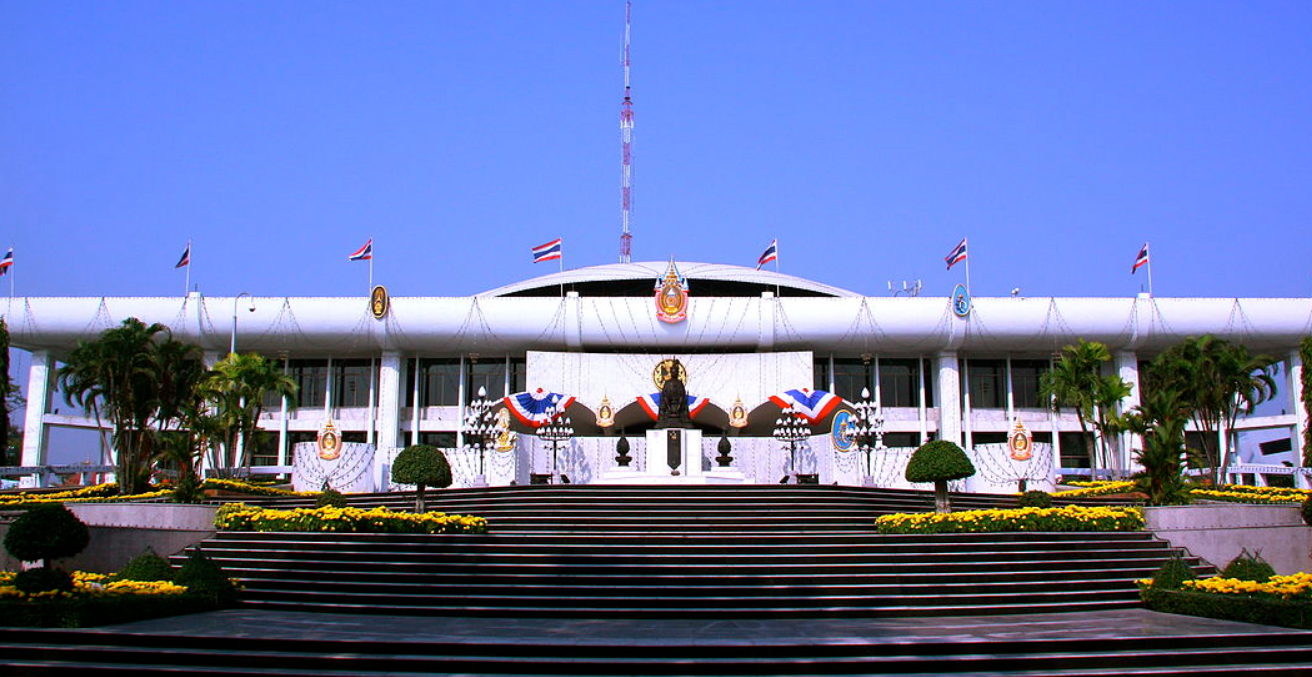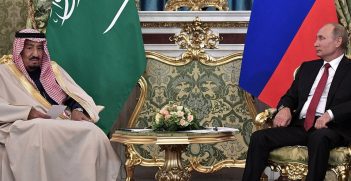The Future of Thailand in an Era of Great Power Rivalry

As relations between China and Thailand grow closer, Thai elites attempt to moderate Beijing’s influence.
In September 2018, a quarrel between Thai guards at Don Muang and a Chinese tourist turned violent. The quarrel took place after the visitor was denied entry on the grounds that he could not show evidence that he would return to China after his trip to the kingdom. The incident would be worrying for Thailand, which since the coup of 2014, has increasingly welcomed growing numbers of Chinese tourists. And yet at the same time, the incident was somewhat symbolic of Thailand’s struggle to manage the increasing pressure China is placing on its sovereignty.
The China Model
China’s influence, far from being that of a regional hegemon, is more like that of an “authoritarian gravity centre” as posited by scholars Kneuer and Demmelhuber. Here the “gravity” analogy is apt. Just as physical proximity has no effect on the strength of the gravitational force, it also does not affect the extent of authoritarian influence. Kneuer and Demmelhuber argue that authoritarian gravity centres can exert influence, even unintentionally, on a regional basis because of factors including the quantity of interactions, the existence of networks, and similarities of outlook.
There is a case for greater frequency of interactions. Thai leaders have numerous fora in which interaction with Chinese counterparts occurs, including all of the ASEAN centred fora. But Thai, government and business leaders probably meet Chinese leaders more often than their maritime ASEAN counterparts because of the sub-regional organisations linked with southern China.
Mainland Southeast Asian leaders deal with their Southern China counterparts often, on all manner of infrastructure, from road, to rail, to electricity.
There are also certainly human networks. The role of Sino-Thais in building Thailand’s economic links with China has been well documented and continues. The story of CP Industries, led by Sino Thai Dhanin Chearavont, leading the first large foreign investment into Deng Xiaoping’s post-1979 China is almost now the stuff of legends. The role of Sino-Thais in spruiking the China Model is a more recent phenomenon.
Finally, there has also been some similarity in outlook with regard to criticism of the irresponsible, manipulative, crusading and hypocritical West.
For some in Thailand, adopting a China Model has some attraction. It offers a two-for-one deal. Not only does Thailand get the political stability that repressive security policies offer, something that has become more alluring as political chaos and violence has increased over the last decade,it also might generate the high economic growth that unbridled state-backed capitalism theoretically offers.
Thailand’s China Model means not only emulating some Chinese policies, such as more surveillance and repression, but linking with its economy. Stronger economic growth will restore the fortunes of the military government, or so it hopes. In this regard the junta has been placing significant hope that the Eastern Economic Corridor plan will generate sufficient economic growth to help Thailand escape the middle income trap, raising per capita income from US $6,500 to US $20,000 within 20 years. The Eastern Economic Corridor will comprise transport links including high speed rail and airports allowing Thailand to grow its car, electronics and IT industries by linking with China’s via the Belt and Road Initiative and placing Southeast Asia within one hour travel by plane.
The push-back
But while a protection pact between Thailand’s government and certain business elites against political chaos might have increased the attraction of the China Model, a strong set of antibodies have been awakened in the last two years.
Deep in the DNA of Thai elites is a belief that King Chulalongkorn Rama V preserved Thailand’s independence through his agile diplomacy, and in particular, his willingness to find friends amongst many Great Powers.
Much as the Thai elites resented the US for hypocritical hectoring, quiet concern at China’s encroachments of Thai sovereignty is developing.
This was reflected in Thailand’s decision reject use of Chinese loans to build a high speed railway for Nong Khai to Bangkok. Thailand’s bureaucrats are extremely allergic to debt, one of the reasons why the Yingluck rice pledging scheme is so detested.
The reversal on improving the Mekong’s navigability is another example. In 2016 the Thai Cabinet agreed to a plan to develop Mekong navigability. Subsequently, Laos, Thailand, Myanmar and China agreed to improve navigability to allow the passage of ships over than 500 tonnes. But a study conducted amongst Thais in Chiang Rai province between October 2017 and May 2018 found strong concerns about removing obstacles and developing navigability, especially regarding impact on environment and livelihoods. The Thai Foreign Minister Don Pramudwinay subsequently announced in late January 208 that China had agreed to halt the blasting program. While environmental concerns may have been legitimate, this decision may also have been influenced by the fear of having large Chinese vessels moving freely down the Mekong into Thai territory.
Then we have the battles of the Mekong Forums. While China would like to see the Lancang Mekong Cooperation forum (LMC) become the principal forum for developing mainland Southeast Asia and Southern China, neither Thailand nor the other members of the Mekong River Commission (MRC) – Laos, Vietnam and Cambodia, show any sign of wishing to relinquish their non-China Mekong forums. In 2018, they used the Mekong Forum to praise the “prior consultation process “agreed under the 1995 Mekong Agreement that seeks input from all stakeholders prior to the commencement of big projects. Prayuth, Hun Sen and other leaders also used the occasion to raise concerns about disaster management, sustainability and environmental challenges ahead for the Mekong, including form climate change and development. The MRC, with China merely an observer, has little legal or physical leverage on China but may still be valued for its normative potential. China, for its part, has committed to ensuring cooperation between the LMC and MRC, arguing that the two forums are “members of the same family that could forge a strong partnership to achieve their ambitious goals.”
So what does this all mean?
It’s fair to say that we are likely going to see in 2019 the emergence of Thailand that is not as democratic as we might like, but not as close to China as we might fear.
Dr Gregory Raymond is a research fellow in the Strategic and Defence Studies Centre. Before joining the ANU, Greg worked extensively in Government, including in strategic and defence international policy areas of the Department of Defence. A larger version of this article will be published in a forthcoming ISEAS-Yusof Ishak Institute volume “Southeast Asian Affairs 2019”.
This article is published under a Creative Commons Licence and may be republished with attribution.





